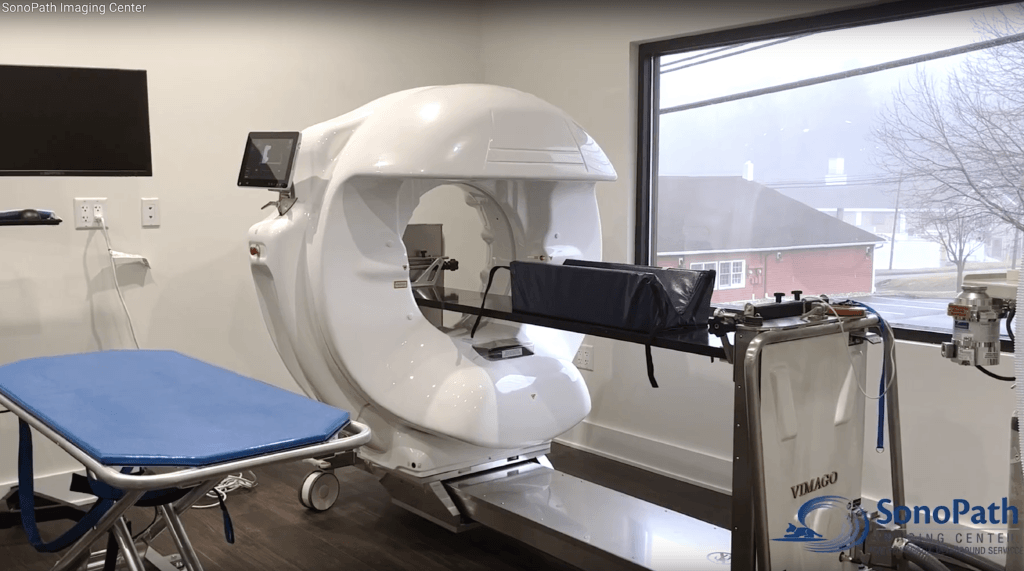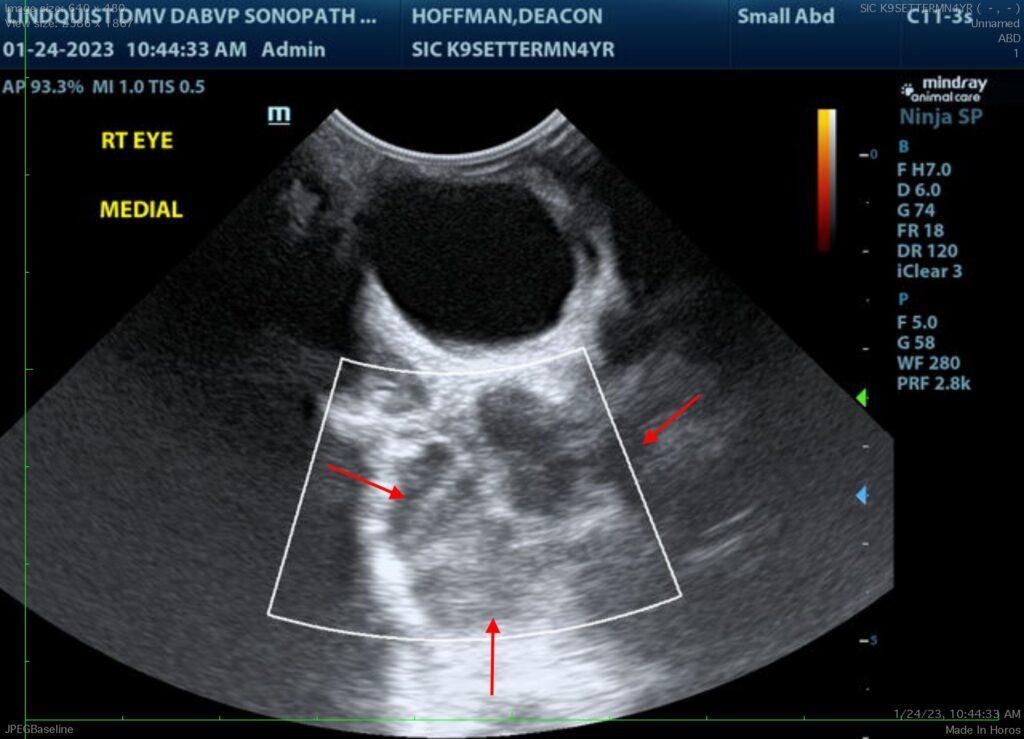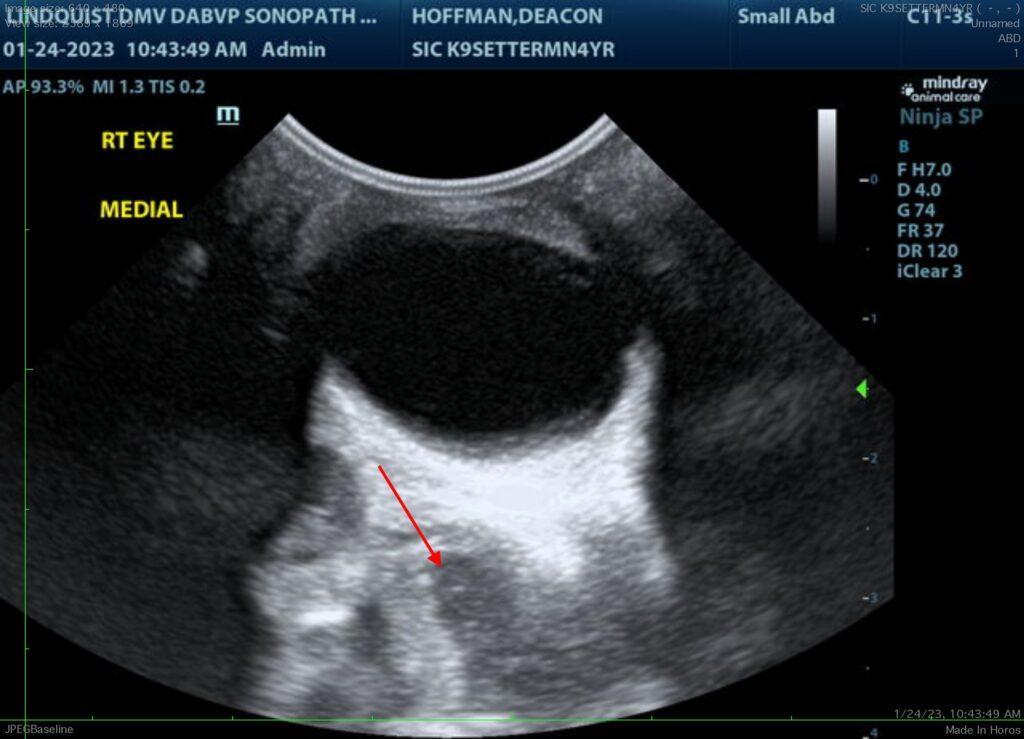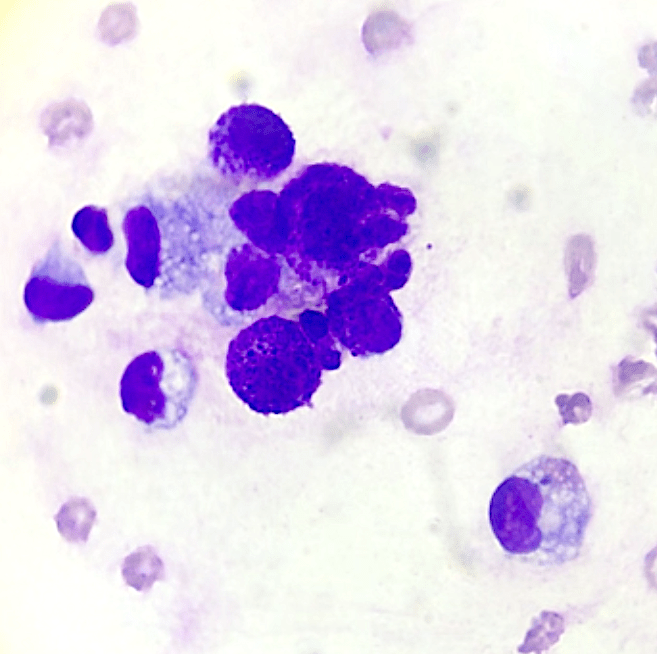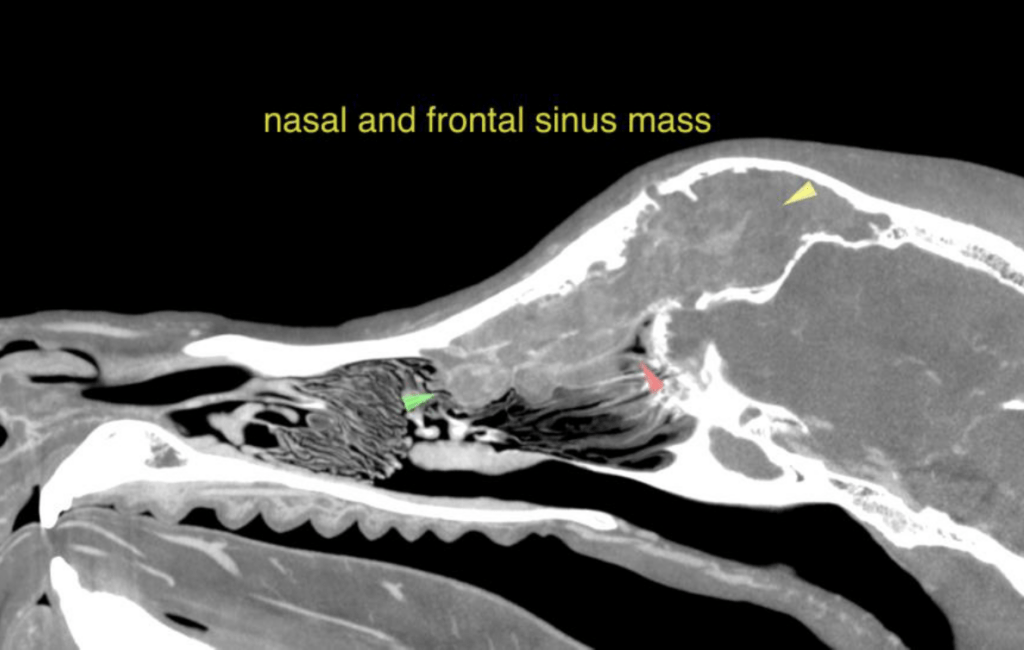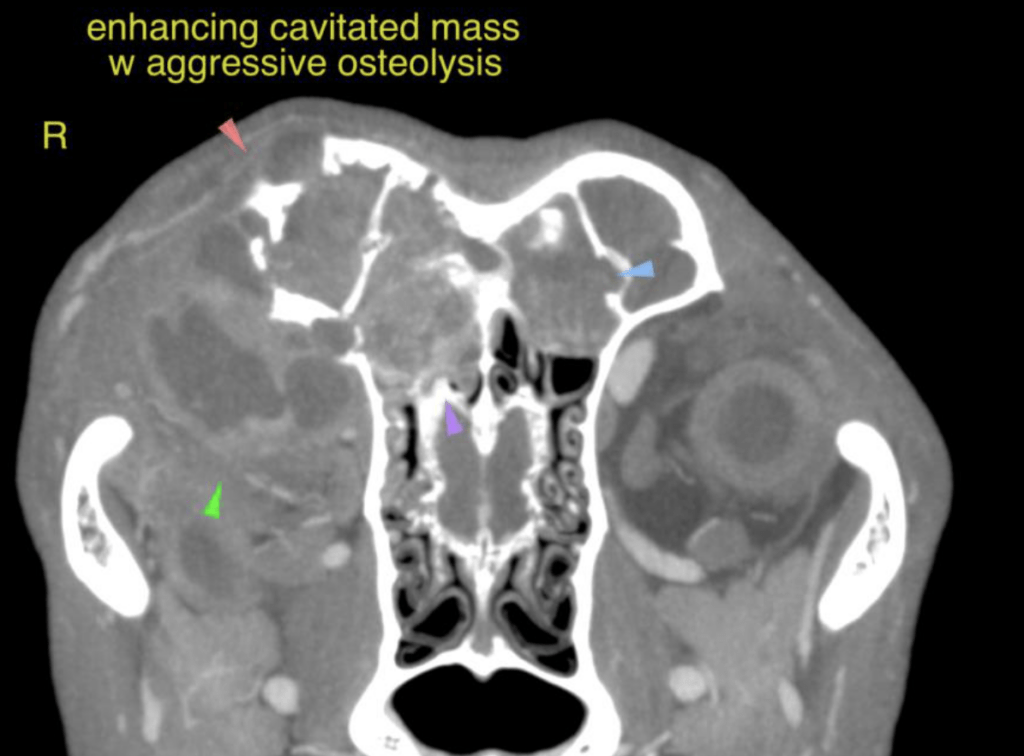Ultrasound study: Imaging of the right eye reveals a large cavitated retrobulbar lesion with hypoechoic fluid and a moderate amount of debris which is encapsulated by hyperechoic vascularized tissue with multiple septations. A significant mass effect onto the right eye is seen. No infiltration of the ocular tissues is noted and no internal echoarchitectural abnormality of the right eye is seen. No significant peripheral inflammation is seen circumferential to the cavitary lesion. The cavitary lesion measures approximately 5 cm in height, 5 cm in length, and 3 cm in diameter. Part of this cavitary lesion protrudes beyond the margins of the bony orbita including the zygomatic arch. There also is access to the lesion’s cavities in the temporal frontal window which ultimately would be used to aspirate the fluid within the cavitary lesion. The left eye was scanned for comparison and debris/flare versus partial retinal detachment are seen in the posterior aspect of the vitreous.
CT Study
Imaging of the right eye, retrobulbar space, and head CT revealed the presence of a solid perfused soft tissue mass within the caudodorsal aspect of the right nasal cavity as well as within the frontal sinuses which causes multifocal polyostotic aggressive bone lysis and connects with the retrobulbar cavitary lesion. The soft tissue mass margins are ill-defined. The mass measures a total length of approximately 9 cm, a height of 2.5 cm, and a width of 4 cm. Aggressive osteolytic changes of the right nasal, bilateral frontal bones including their internal laminae, and the dorsal aspect of the right cribriform plate are seen. The aggressive osteolytic changes do also involve the right bony orbita and allow for extension of the mass into both frontal sinuses as well as into the right orbita. Regional turbinate destruction is noted within the right nasal cavity.
CT diagnosis
• Soft tissue mass with aggressive biological behavior within the right nasal cavity and bilateral frontal sinuses with polyostotic aggressive osteolysis and extension of a cavitating component of the mass into the right retrobulbar space.
• Minimal right medial retropharyngeal lymphadenomegaly.
CT Interpretation
The CT findings are highly suggestive of a malignant soft tissue neoplasia within the right nasal cavity and both frontal sinuses which perforates into the right orbita with a cavitating, mostly fluid filled, component. Polyostotic aggressive bone lysis is seen and does involve the bilateral frontal bones as well as the right cribriform plate. Differential diagnosis includes adenocarcinoma, other carcinoma, and lymphosarcoma primarily. Final diagnosis will require sampling.
Sampling
FNA sampling was limited to the cavitary component within the right orbita at this point. The diagnostic yield may be low here and the sampling may have to be repeated in order to obtain tissue samples. The component of the mass inside the frontal sinuses could be sampled under ultrasonographic guidance through the defects in the external lamina of the frontal bones. Endoscopic sampling of the mass within the dorsal aspect of the right nasal cavity would be an alternative approach to that.
Cytologic Observations
Submitted are 5 excellent videos of moderate collections of cells from the retrobulbar region in Deacon. The cellularity is mixed. There are scattered macrophages interspersed with good numbers of eosinophils, scattered neutrophils and degenerate debris. There are scattered lymphocytes and plasma cells. Interspersed throughout all of these cells are scattered aggregates and packets of mast cells. Many of the cells are well granulated. Others are minimally granulated. Degenerate debris is occurring secondarily.
Cytologic comments
The cellularity in the collection is mixed and somewhat difficult to interpret. With the packets of mast cells and scattered irregular mast cells, I am concerned about a mast cell tumor in this region. Eosinophils often respond to mast cell tumors particularly in the head or neck region. This growth may be more aggressive than just a low-grade mast cell tumor. The eosinophils and mast cells could also suggest the possibility of a foreign body granuloma in this region. Continued evaluation with a followup biopsy is encouraged. This easily could be a mast cell tumor or may be due to foreign body granuloma at this location. A guarded prognosis is warranted until further evaluation with a follow-up biopsy to confirm the cellularity has occurred.
